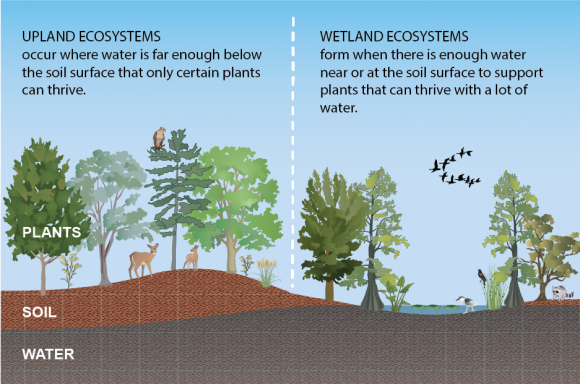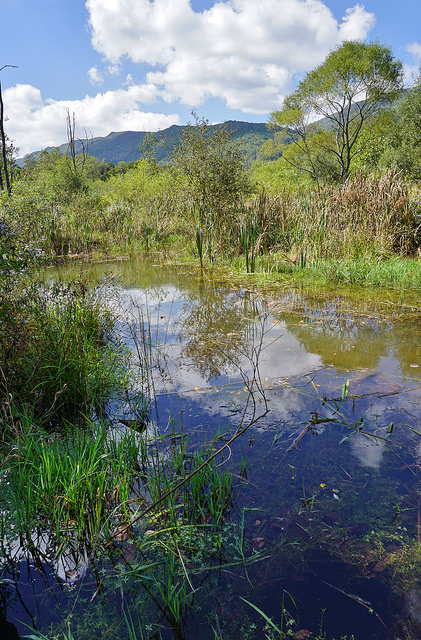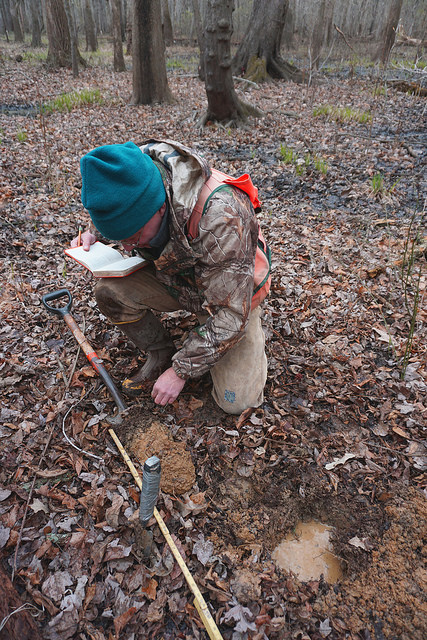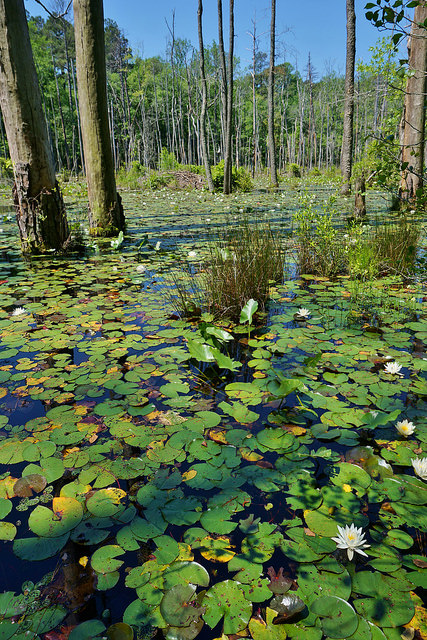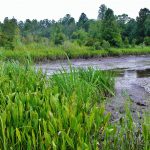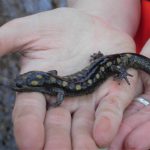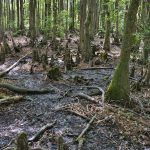What Makes a Wetland?
Water/Hydrology
Water is an essential feature of wetlands
- Hydrology is the study of water, its properties, distribution, and circulation above and below the earth’s surface and in the atmosphere. For wetlands, it is important to know where the water comes from, how much water there is, and how long it stays on or under the surface.
- Water sources for wetlands can come from underground, rainwater, tidal waters, or flooding. Wetlands often are located in “lowlands”, because water flows to the lowest points on the landscape.
- There may be enough water for it to collect on the surface, or all of the water may be underground.
- Some wetlands have permanent water, while some are seasonal wetlands that periodically dry out. But even if a wetland is “dry”, it will still have water close enough to the surface to maintain a wetland’s hydrology.
- The amount of water in a wetland determines who lives in the wetland, what type of wetland it is, and when the wetland will be wet.
- In wetlands, signs of water’s presence give scientists clues about how much water has been there and how long it stays. These clues are things like water stains, certain types of plants, and soil color.
- Learn more with our factsheet on wetland hydrology
Soils
Soils are unique in wetlands.
- Soil properties change when soil is wet enough, long enough.
- Hydric soils are soils that are saturated or inundated long enough during growing seasons to develop anaerobic (no free oxygen) conditions in the top portion of the soil. These anaerobic conditions result in the changes to iron and manganese in the soil. In the wettest soils, sulfur is converted into a gas, creating a “rotten egg” odor.
- Some of these chemical changes result in changes to soil color. A Munsell Soil Chart is used by scientists to classify soils by color.
- Dead plant and animal material, over a long period of time, helps form hydric (wetland) soils which tend to be very dark in color. Organic matter builds up in wetlands because microbes cannot break down dead material as quickly in saturated, anaerobic environments. This organic matter builds up to form hydric soils of peat or muck, or dark organic-rich mineral soils.
- Soil scientists can identify and classify the soils by rubbing the soil between their fingers. Using this method, they can classify the soil texture and whether a soil is a mucky mineral, mineral, or organic soil. Organic soils are further classified as muck, mucky peat, or peat.
- Scientists look for hydric soils indicators that can apply to soils. Some common hydric soil field indicators include hydrogen sulfide, stratified layers, organic bodies, muck presence, thick dark surface, mucky peat or peat, iron-manganese masses, etc. (NRCS: Field Indicators of Hydric Soils in the United States) These indicators can be seen in wetlands soils during wet as well as dry times.
- Learn more with our wetland soils fact sheet
Plants
Wetland plants have special adaptations
- Wetland plants can live with a lot of water. They are different from those that live on drier land (upland).
- Plants that live in wetlands are often referred to as hydrophytic vegetation. These are species that require, or can live with, long times of inundation or saturation of the soil during their growing season. Saturated soil has all the little air spaces filled with water.
- Hydrophytic vegetation has physical adaptations [such as buttressed trunks, hollow stems, shallow roots, adventitious roots, pneumatophores (cypress knees), hypertrophied lenticels], physiological adaptations (changes in internal system responses) [such as transport of oxygen to roots, anaerobic respiration, storage of more carbohydrates, synthesis of ATP], and in other ways to be successful [such as seed germination underwater, floating seeds, seed dispersal by water, growth dormancy, change in direction of root growth] (more wetland indicator information)
- Plants have been given labels based on their frequency of occurrence in wetland or upland habitats. (USDA Wetland Indicator Status information)
- OBL are “obligate wetland” species and almost always occur in wetlands;
- FACW are “facultative wetland” species and usually occur in wetlands, but may occur in non-wetlands;
- FAC are “facultative” species and equally occur in wetland and non-wetland areas;
- FACU are “facultative upland” species and usually occur in uplands, but may occur in wetlands;
- UPL are “obligate upland” species and almost never occur in wetlands.
- Wetlands are typically dominated by OBL, FACW, and FAC vegetation; however, some wetlands can be dominated by FACU species, but have non-dominant vegetation in the wetter categories. It is especially important to examine hydric soil, wetland hydrology, and hydrophytic vegetation indicators in these situations.
- Learn more from our wetland plants fact sheet

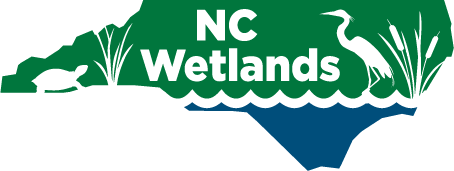
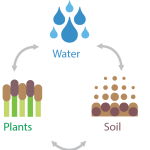 To have a wetland, you must have water, and you must have enough water to keep the soil wet. The soil must be wet enough, long enough, for water-loving plants to grow.
To have a wetland, you must have water, and you must have enough water to keep the soil wet. The soil must be wet enough, long enough, for water-loving plants to grow.